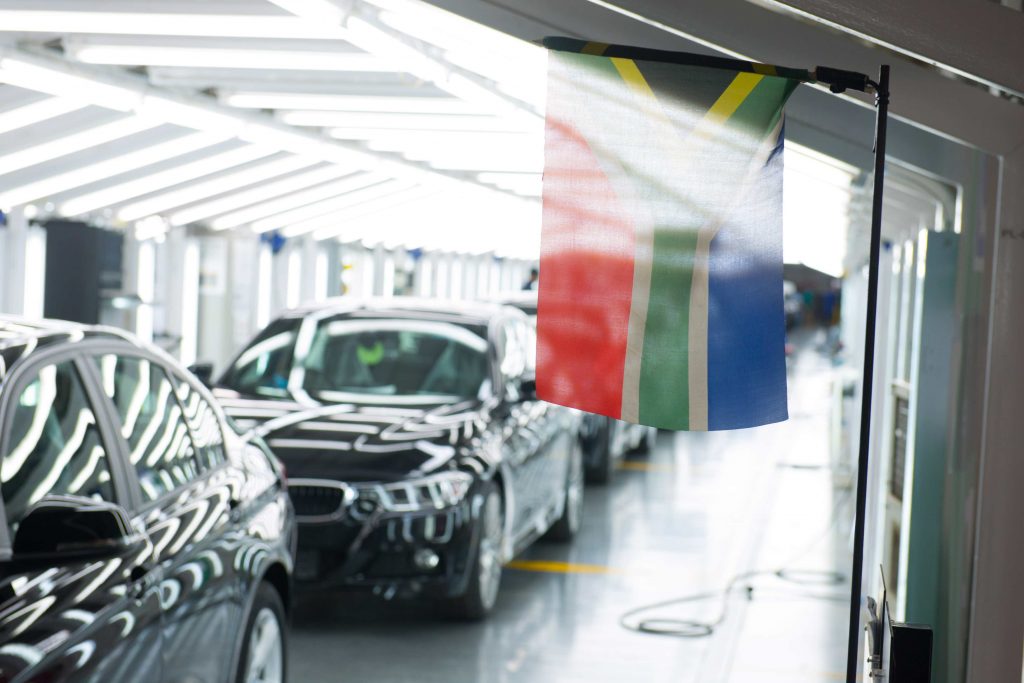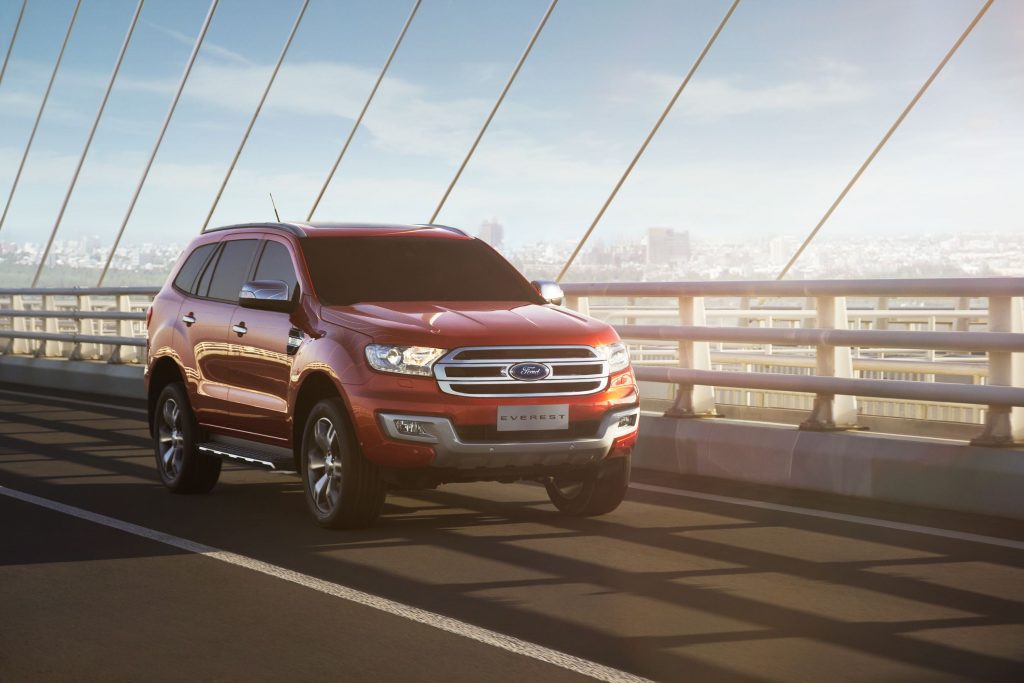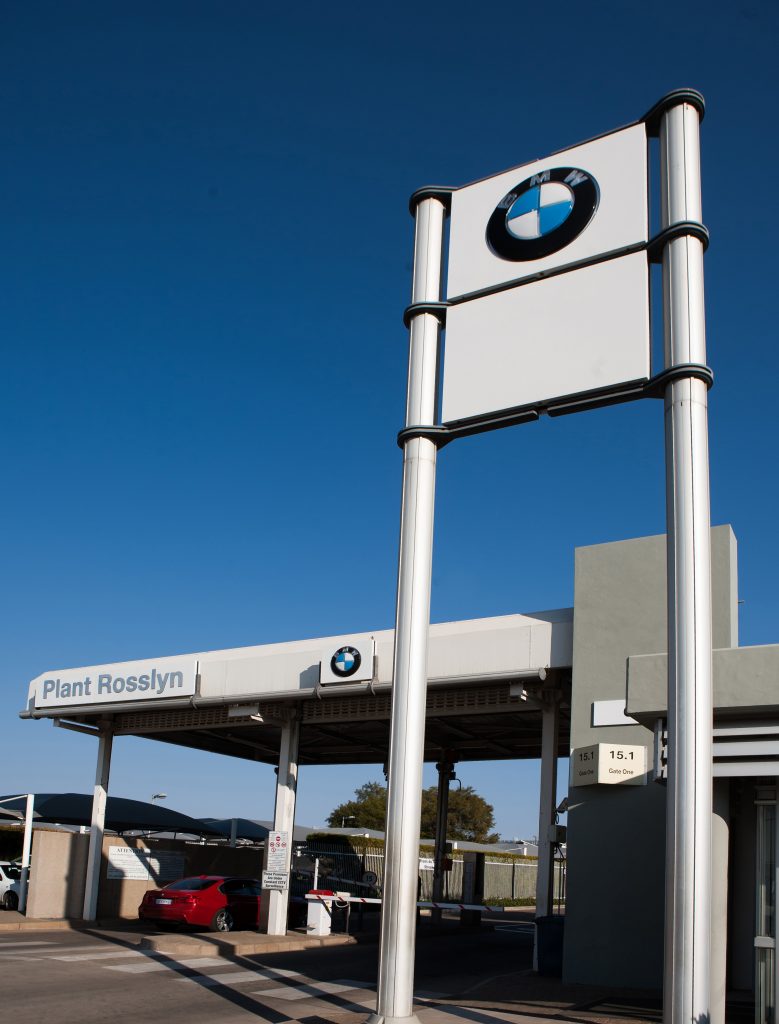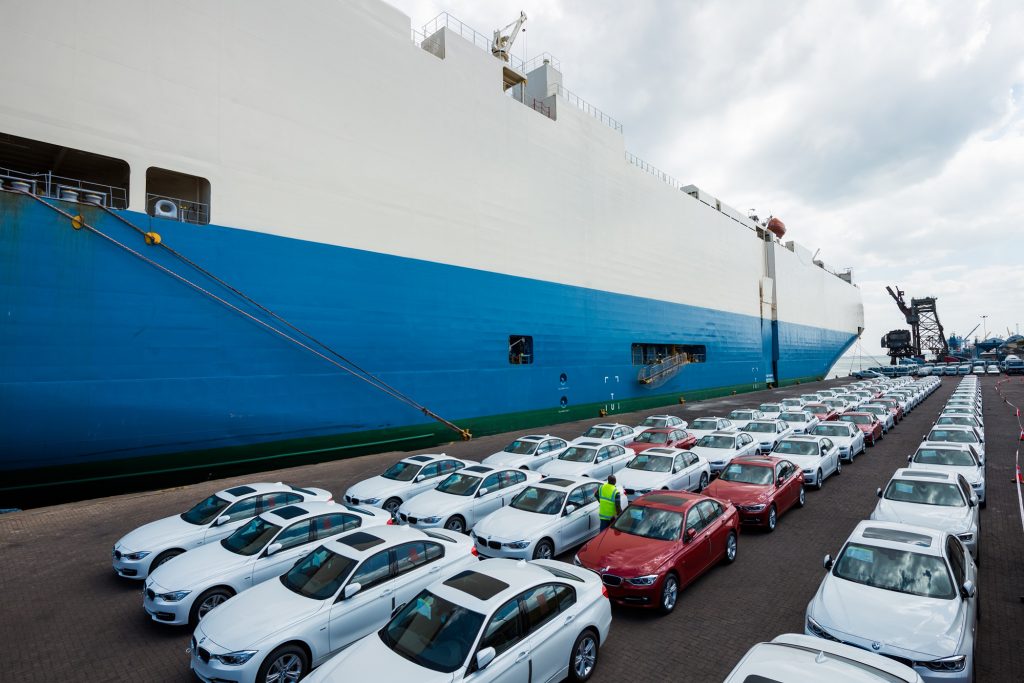 [sta_anchor id="1"]South Africa’s economy is battling problems, but its vehicle exports and role in global vehicle programmes mean it continues to attract investment
[sta_anchor id="1"]South Africa’s economy is battling problems, but its vehicle exports and role in global vehicle programmes mean it continues to attract investment
South Africa’s economy is in the doldrums. A rout in commodity prices has damaged consumer spending power. The country is skirting perilously close to having its debt rating moved down to junk status by international agencies such as Moody’s. With unemployment officially above 25%, social unrest in the form of violent protests occurs regularly. The country’s currency, the rand, has depreciated by around 30% versus the dollar over the past year. Many investors have been picking up their skirts and running for the door.
The country is also weighed down by a political crisis within the ruling African National Congress (ANC). The administration of president Jacob Zuma is mired in a corruption scandal that could end in impeachment, mirroring the paralysis that has gripped Brazil, another country that held so much promise in the eyes of investors just a few years ago.
Much of South Africa’s industry has been badly affected by this torrent of bad news. Its commodity exports, such as iron ore, gold and other mined products, have taken a beating on the global market. Despite the weak rand, exports as a whole have also declined.
In this story...
Businesses, meanwhile – including many logistics firms – are choosing to sweat existing assets and are spending money on maintaining existing fleets rather than buying new ones. This trend is expected to continue until confidence returns and the rand starts recovering, Mahoney says.
One of the only bright spots for the economy has been in vehicle exports, which reached a record 333,802 units in 2015, helped in part by the weakness of the rand, recovery in Europe (South Africa’s largest export market) and continued investment from the country’s important carmakers, including Ford, Toyota, BMW, Mercedes-Benz and Volkswagen, which produce vehicles and components for global export. Although vehicle exports dropped in the first three months of 2016, they picked up in April and May and are expected to rise again this year following a number of important launches.
To remain competitive for exports, carmakers are looking at their supply chains and logistics processes, which in South Africa have been hampered by consistent labour issues, including in the country’s rail and transport network. The industry also needs to improve its local sourcing and component production, as the weak rand otherwise increases the cost of manufacturing. As ever in South Africa, the government seeks to actively support the industry and encourage investment; however, it is not clear if this will be enough to overcome other problems in the country.
[sta_anchor id="2"]Part of a global pictureSouth Africa’s main production and export strength lies in its mainstay OEMs, which use the country as a base to serve key markets in Europe, Asia and North America, as well for Africa. Ford and BMW have underpinned confidence in South Africa as an export platform by announcing new production runs. BMW will begin tooling up to build the X3 SUV, phasing out the 3-Series sedan (which will be built in Mexico from 2019) and using South Africa to help meet surging demand for compact SUVs globally. Ford will add the Everest SUV to local production of the Ranger pickup, which will not only present export opportunities, but also help it increase local supply.

“The all-new Everest shares a platform and some common parts with the hugely successful Ford Ranger and we have a robust plan to increase local suppliers through increased localisation of components,” says Jeff Nemeth, president and chief executive of Ford’s Sub-Saharan African region.
The Everest investment builds on Ford’s expansion in 2008, he explains, when it began making the Ranger pickup truck at the Silverton Assembly Plant in Pretoria, and added Duratorq TDCi engines at its plants in Struandale in Port Elizabeth for local consumption and export.
The Ranger is now exported to 148 countries in Africa, the Middle East and Europe, while engines and machined components are supplied to Argentina, Thailand, North America, India and China.
“Africa is one of the youngest markets in the world and presents huge opportunity in terms of consumption,” Nemeth continues. “The buying power of African consumers is on the rise as the continent’s middle class increases exponentially.”
Ford, along with Nissan, has production facilities in Nigeria, and is growing a network of dealerships and Quick Lane stores, which are Ford-owned tyre and service centres. “In future, Ford plans to expand parts accessibility and service support throughout the region,” Nemeth says.
BMW South Africa, too, has grown production at its plant in Rosslyn. In 2015, the highest ever production volume of 71,353 units was recorded, with almost 90% destined for foreign shores, according to company spokeswoman Lynette Kamineth.
Other manufacturers have also announced recent investment in the country. Nissan said that it would double output at its plant in Rosslyn by 2018 to around 80,000 units, while Volkswagen has pledged further funds to expand its plant in Uitenhage, near Port Elizabeth, as well as improving the supply chain. Toyota, meanwhile, is in the midst of the country’s largest investment at its plant in Durban, where it will increase production of the Hilux pickup and Fortuner SUV.
[sta_anchor id="3"]Government encouragementThe South African government wants to encourage new OEMs and suppliers to South Africa, and it is doing so through a mix of subsidies and investment support. The main channel is its Automotive Production and Development Programme, a baseline policy governing a system of credits for importers who also export. It was updated last year to lower the production threshold to 10,000 units a year from 50,000 and, as a result, it has improved the country’s attractiveness to lower-volume exporters.
There are already signs of investment. In April, China’s BAIC announced that it would soon break ground for a factory in Port Elizabeth. The news was relayed via the Industrial Development Council (IDC), South Africa’s state-owned investment entity that will also contribute to financing the project. Around 11 billion rand ($724m) will be spent on the plant, the largest ever investment in Port Elizabeth’s history.
According to the IDC, the plant will manufacture pickup trucks‚ SUVs and sedans for the African market, with more than 2‚500 direct jobs to be created.
BAIC is China’s fifth biggest carmaker and it has important domestic joint ventures with Hyundai and Daimler. Now it is trying to expand on a global stage.
“[The carmaker] is clearly looking at the wider African market, not just South Africa,” says Ryan Bax, industry analyst at Frost and Sullivan in Cape Town. “With a growing middle class, there is a need for vehicles that can handle bad roads but also provide comfort and styling.”
Other OEMs may be considering similar strategic decisions. In April, the Industrial Development Zone (IDZ) outside East London, on the Indian Ocean coastline, said it was close to signing with three foreign manufacturers. “Suddenly we are getting more interest from companies,” executive manager Tembela Zweni told Bloomberg recently.
The IDZ has not said who these possible entrants are, but Frost and Sullivan’s Bax says the word is that two are Asian and one is a European company. “The East London IDZ has done quite well to attract offshore investors, including components manufacturers, but they’ve been working at getting carmakers to move in as well,” he comments.
 "With a growing middle class in Africa, the opportunity and potential for an African automotive sector is clear," Lynette Kamineth, BMW South Africa
"With a growing middle class in Africa, the opportunity and potential for an African automotive sector is clear," Lynette Kamineth, BMW South AfricaAmong the incentives the IDZ is putting in place is a universal paintshop to serve all manufacturers at the facility. Considering these can cost around $100m, it would be a considerable saving to carmakers setting up a greenfield manufacturing plant.
Other cities are also looking at dedicated industrial zones. The capital Pretoria is planning to build an ‘automotive city’ in Rosslyn along the lines of the East London manufacturing hub. Good railway and roads connect to the east coast port cities of Durban, East London and Port Elizabeth. Pretoria also lies within Gauteng province, the country’s industrial heartland and the biggest consumer of vehicles.
[sta_anchor id="4"]African potentialWhile the local market is struggling, incentives coupled with potential openings across the continent are luring some manufacturers. The African continent is, however, also feeling the pain of the commodity downturn, while markets in north Africa and the Middle East are suffering from political turmoil and war.
South African car and pickup truck exports into Africa declined for the third year in a row in 2015, according to the Automotive Industry Export Council. African export sales have fallen from 79,228 units in 2013 to 41,446 units last year, hurt in particular by the near closure of the Algerian market, which has seen South African exports fall from 30,000 to around 7,000 in this period. Over time, however, the demand for vehicles is expected to grow.
“It’s all about the long-term picture,” Bax says. “In time, our local market will recover, and further afield there is the whole of Africa.”
South Africa itself also has some immediate concerns in the coming year or so. Wage negotiations within both the component and vehicle-making sectors will soon get underway; in 2013 the industry lost 34 days of production during strikes that cost it millions in revenue.
The supply chain is another issue. Despite South Africa’s large number of OEMs, most plants have relatively low output, making localisation and scale harder to achieve in sourcing and logistics. Government subsidies have helped to support and distort this in some ways, including encouraging yet more small-scale manufacturers. For vehicle logistics, rail strikes and transport bottlenecks in ports remain ongoing problems.
Another looming issue is that of black participation in vehicle and component manufacturing – or rather the lack thereof. About 15 years ago, the ANC began implementing a set of codes requiring strategic industries to advance black economic participation. Mining, banking and other major sectors have set targets relating to executive ownership, but so far the vehicle industry has not been included.
While mining companies and individual banks can be replaced if they opt to disinvest, car companies with specific brands cannot easily be substituted, which has made the government more cautious over the issue. The industry remains largely in the hands of its offshore owners, with some local shareholding. The government hasn’t given up, however, and continues to push for greater black participation.
 BMW South Africa, too, has grown production at its plant in Rosslyn. In 2015, the highest ever production volume of 71,353 units was recorded, with almost 90% destined for foreign shores
BMW South Africa, too, has grown production at its plant in Rosslyn. In 2015, the highest ever production volume of 71,353 units was recorded, with almost 90% destined for foreign shoresLast year, a number of companies said they were considering setting up an automotive sector charter that would manage black ownership quotas and participation, but little has happened since.
“No final decision has been taken regarding an auto sector charter or whether individual companies will pursue transformation in terms of the ‘Revised Broad-Based Black Economic Empowerment codes of Good Practice’,” says Nico Vermeulen, director of Naamsa, referring to legislation to support black participation in the economy. Instead, they may just opt for a ‘generic scorecard’ option in trying to grow a portfolio of black suppliers and contractors, he suggests.
While South Africa’s economy and government have plenty of problems to address, its automotive assembly and export industries have life left yet. As Lynette Kamineth puts it: “With a growing middle class in Africa, the opportunity and potential for an African automotive sector is clear. BMW will take a medium- to long-term approach to its expansion into sub-Sahara Africa and looks forward to the contribution that we can make to unlock this potential in the years to come.”



































